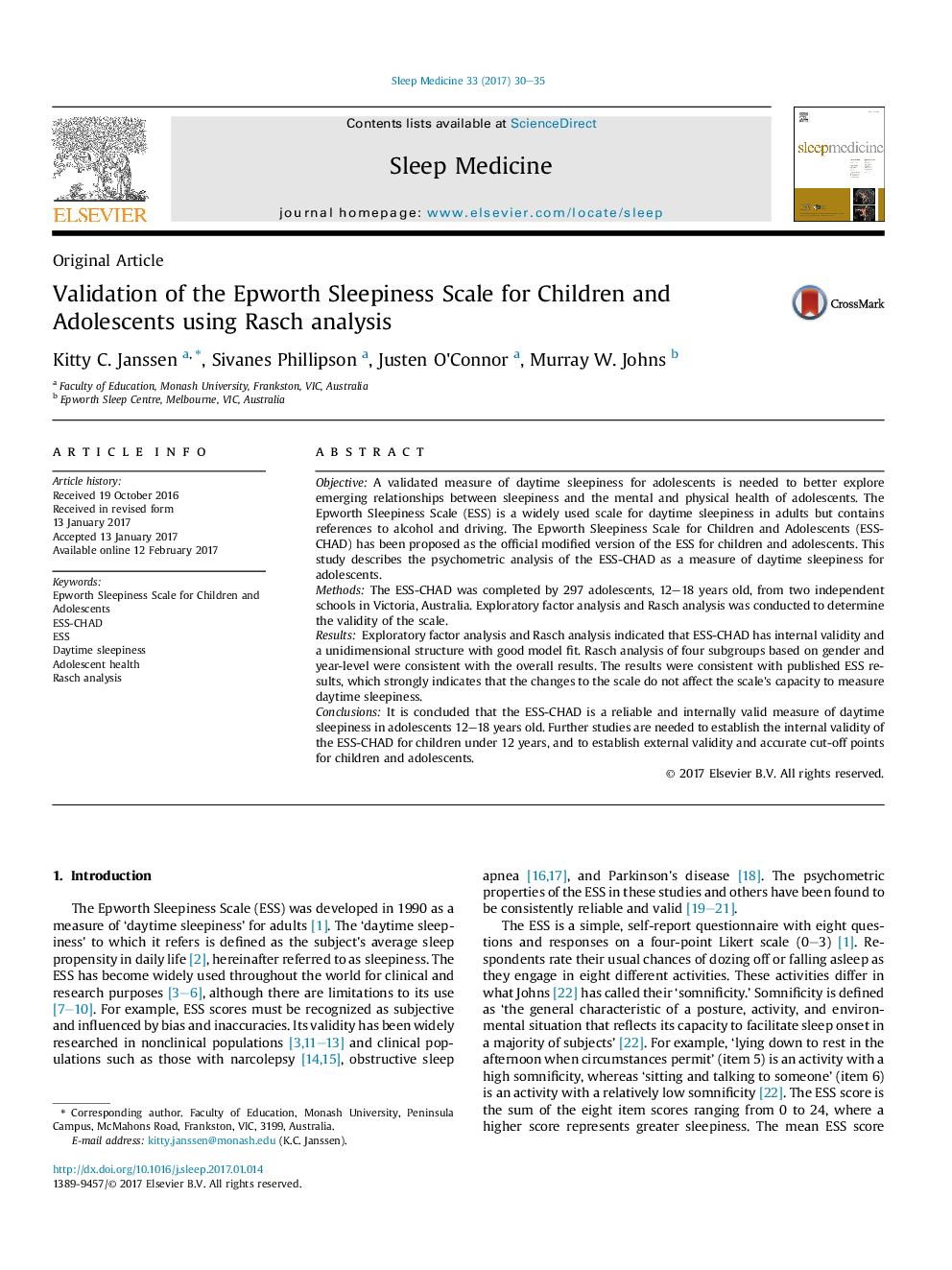| Article ID | Journal | Published Year | Pages | File Type |
|---|---|---|---|---|
| 5643745 | Sleep Medicine | 2017 | 6 Pages |
â¢The Epworth Sleepiness Scale for Children and Adolescents (ESS-CHAD) is an official version of the Epworth Sleepiness Scale.â¢The ESS-CHAD is proposed as a valid measure of daytime sleepiness for adolescents.â¢The ESS-CHAD was determined to have a unidimensional structure using Rasch analysis for adolescents.â¢Results indicate that the ESS-CHAD functions in a way similar for adolescents to that of the ESS for adults.
ObjectiveA validated measure of daytime sleepiness for adolescents is needed to better explore emerging relationships between sleepiness and the mental and physical health of adolescents. The Epworth Sleepiness Scale (ESS) is a widely used scale for daytime sleepiness in adults but contains references to alcohol and driving. The Epworth Sleepiness Scale for Children and Adolescents (ESS-CHAD) has been proposed as the official modified version of the ESS for children and adolescents. This study describes the psychometric analysis of the ESS-CHAD as a measure of daytime sleepiness for adolescents.MethodsThe ESS-CHAD was completed by 297 adolescents, 12-18 years old, from two independent schools in Victoria, Australia. Exploratory factor analysis and Rasch analysis was conducted to determine the validity of the scale.ResultsExploratory factor analysis and Rasch analysis indicated that ESS-CHAD has internal validity and a unidimensional structure with good model fit. Rasch analysis of four subgroups based on gender and year-level were consistent with the overall results. The results were consistent with published ESS results, which strongly indicates that the changes to the scale do not affect the scale's capacity to measure daytime sleepiness.ConclusionsIt is concluded that the ESS-CHAD is a reliable and internally valid measure of daytime sleepiness in adolescents 12-18 years old. Further studies are needed to establish the internal validity of the ESS-CHAD for children under 12 years, and to establish external validity and accurate cut-off points for children and adolescents.
